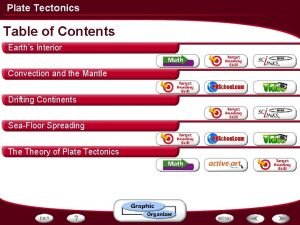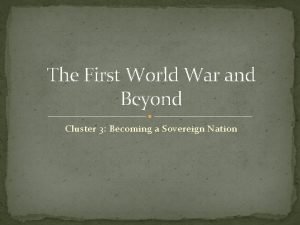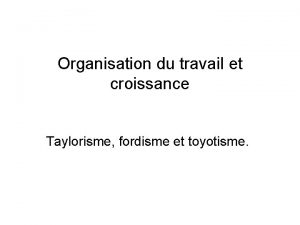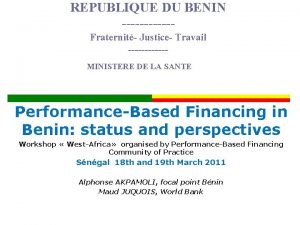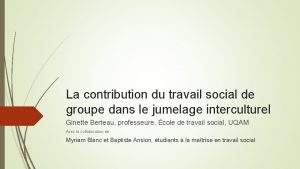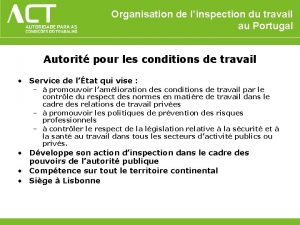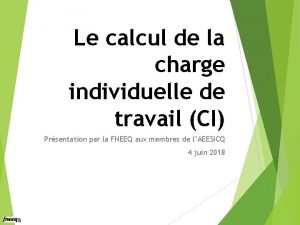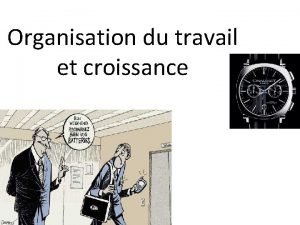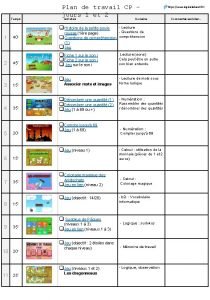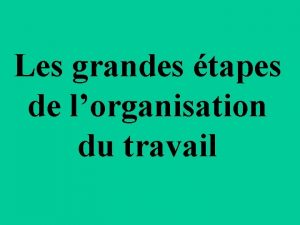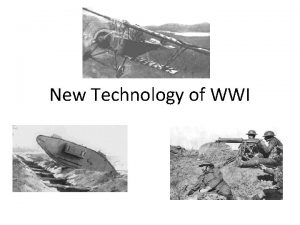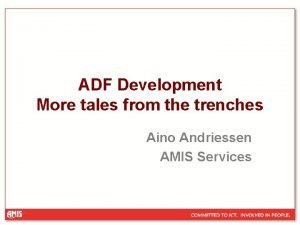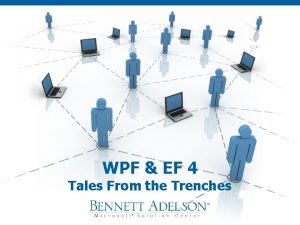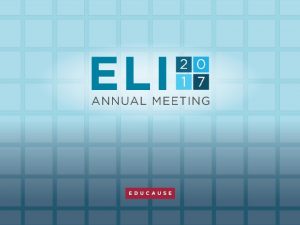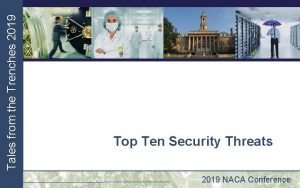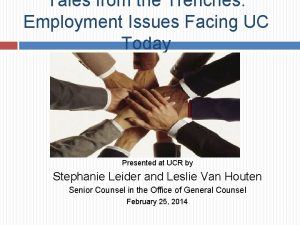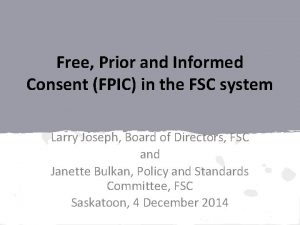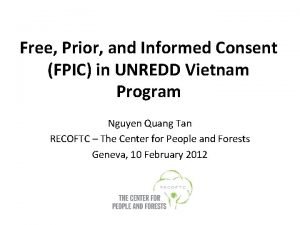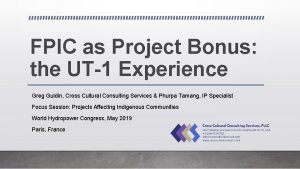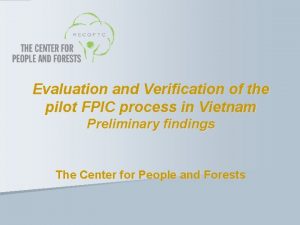Operationalizing FPIC Tales from the Trenches of Travail












![Consultations and GFN Project Preparation EARLY � Meaningful consultations for initial community engagement [ICP] Consultations and GFN Project Preparation EARLY � Meaningful consultations for initial community engagement [ICP]](https://slidetodoc.com/presentation_image_h/17a0421b8e85292203b862cb692bd8c1/image-13.jpg)











![FPIC Indicators in the Project Cycle SIA/CONSULTATIONS [Achieving: F, P, I] LOAN AGREEMENTS [Achieving: FPIC Indicators in the Project Cycle SIA/CONSULTATIONS [Achieving: F, P, I] LOAN AGREEMENTS [Achieving:](https://slidetodoc.com/presentation_image_h/17a0421b8e85292203b862cb692bd8c1/image-25.jpg)







- Slides: 32

Operationalizing FPIC: Tales from the Trenches of Travail & Triumph Presentation for: Compliance Advisor Ombudsman September 2017 Gregory Eliyu Guldin

Operationalizing FPIC: Overview �The Sakhalin Model �Achieving FPIConsent �Obstacles to Achieving FPIC �Maintaining FPIConsent �Assessing FPIC Compliance

The Sakhalin Model Indigenous-Government-Corporate Collaboration in Managing Social Risk An Approach to Achieving FPIC

The Sakhalin Model The Sakhalin-2 LNG Project--one of the first private sector projects recognized by IFC as achieving FPIC: Ø For the Sakhalin Indigenous Minorities Development Plan 2 (2011 -2015) Ø For the Sakhalin Indigenous Minorities Development Plan 3 (2016 -2020) How did they get there?

Sakhalin-2 Project Context �Offshore oil extraction �Onshore pipeline and LNG processing in Russian Far East �One of largest foreign investments in Russian Federation: US$20 billion+ �Sakhalin Island population ≈ 500, 000 people �Indigenous Minorities ≈ 4, 000 people �Nivkh �Uilta (Orok) �Evenk �Nanai

From Protests. . . �Prior to robust engagement: indigenous protests publicized around the world � 20 -24 January 2005: Indigenous Minorities blockade Sakhalin-1 and 2 to protest livelihood impacts �Local, national and international media coverage �Sakhalin Island’s Indigenous Minorities demand independent cultural impact assessment and IP Development Fund

. . . To Praise Today, the project enjoys praise from affected Indigenous Peoples as well as from Russian and international IPOs. The Sakhalin Model has emerged as a successful approach to corporate-indigenous-government relations and collaboration. (e. g. , IFC SE Guidebook; WB/IFC Workshop; UN Permanent Forum Case Study)

Recipe for Success �Development of three 5 -year SIMDPs (Sakhalin Indigenous Minorities Development Plans) since 2006 �Three tries at BCS/FPIC (ICP) taught key lessons on gaining trust �Company realization (with EBRD push) on need to change �GFN efforts to realize change �External facilitator-consultant helpful

Recipe for Success: Free �Non-interference in indigenous politics; IP decide on own participation format and representatives �Letting local people determine what’s “sustainable” and how to handle controversies without coercion �Shared decision-making: Govt, Company, IP Maintaining the core approaches of mutual respect and capacity-building

Recipe for Success: Prior & Informed �Intensive Consultation: Multiple Rounds extending over a year �Meeting on Indigenous Home Grounds �Participatory approach: Working Group of IP, Govt, Company representatives �Engagement and giving voice: Soliciting all concerns to understand (and delimit) scope of redress → Common ground; collaborative interactions → Enabled IP to be seen and taken seriously → Enabled Company to respond systematically

SIMDP 3 Components Social Development Program US$ 160, 000/year 5 Sub-components: Traditional Economic Activities Support Program US$ 160, 000/year 4 Sub-components: • Culture • Self-Sufficiency Grants • Education • Business Plan Grants • Health • Capacity-Building • Micro-Loans • Sports

Achieving FPIConsent: BCS / ICP for Process & Project
![Consultations and GFN Project Preparation EARLY Meaningful consultations for initial community engagement ICP Consultations and GFN Project Preparation EARLY � Meaningful consultations for initial community engagement [ICP]](https://slidetodoc.com/presentation_image_h/17a0421b8e85292203b862cb692bd8c1/image-13.jpg)
Consultations and GFN Project Preparation EARLY � Meaningful consultations for initial community engagement [ICP] LATER � GFN process to decide on i) FPIC process (consent to the terms of consent), and ii) project contractual offer [i. e. , mitigation/benefits package; FPIConsent] Loan Negotiations / Implementation �Mitigation/benefits package covenanted �Consent cannot be revoked or suspended over dissatisfaction regarding non-contractual issues �GFN invoked if complaints of contractual non-performance

Consent for what? Need to clarify Cross-Cultural Consulting SERVICES, PLLC Let’s be specific For the project? �Too broad: which activities? For project activities? �What mitigation/benefits? For project mitigation/benefits plans? �Yes: for a specified (contractual) mitigation/benefits package

FPIC for Who: Defining “Affected Communities” Which communities? Suggestions �What if unequal degrees of impacts? � Consult with PAPs � Community A: major impacts � Community B: minor impacts �How weigh their “votes”? � Need to problematize “community”: define different types of community, e. g. , spatially bound vs. scattered or permanent vs. seasonal � SIA (or similar internal IFC exercise) needs to identify communities with “significant effects” and those with “minor effects” � When determining “support, ” weigh their “votes” proportionally www. crossculturalconsult. com

FPIC: Step by Step Template �Tripartite Working Group (IP, Government, Company) �First Round Consultations (all grievances, all requests; consent strategy) �WG develop draft Agreement (mitigation, benefits plans) �Second Round Consultations (critique of draft Agreement) �WG revise draft Agreement (incorporate critique) �WG decide if further rounds Consultation necessary �Consent process implemented �Successful? Congrats? If not: GFN

Obstacles to Achieving FPIC

Company Sponsor Issues �Resistance to Sharing Decision-making power with noncompany actors �Abundance of caution regarding release of information, particularly regarding land purchase/lease �Reluctance to allocate internal resources to build internal capacity to address IP/Community issues �Assuming Company technical expertise should always trump IP/community preferences, values, approaches

Government Issues �Reluctance to sharing decision-making power with nongovernment actors as regards IP/community issues �Attempts to use Company development plans to fill government budget gaps �Desire to select the indigenous representatives the government has previously worked with as the FPIC representatives �Objection to confidentiality & anonymity of some community consultations

Indigenous/Community Issues �Mistrust of Company & Government as reliable partners �Mistrust of information received from Company & Government as regards impacts and risks, especially environmental �Fear “consent” once granted will be misconstrued into an open-ended yielding of future claims and rights �Fear of inappropriate pressure applied by Company & Government �Internal IP/community conflicts over control of promised resources (benefits package) �Unfamiliarity with bureaucratic procedures such as FPIC/PS 7

Maintaining FPIC Some Practical Tips to Maintain Consent over Time

Maintaining FPIC � 3 -party Internal Monitoring �External Monitoring �Effective 3 -Party Grievance Mechanism �Transparency �Budget Allocations �Process/Decision-making �Periodic Agreement Renewals

Cultivating the FPIC Spirit ü Maintain an atmosphere and relationship of mutual respect - in words and deeds ü Increase self-reliance & capacity-building as spur to continued participation ü Power-sharing as basis of partnership (e. g. , committees and working groups): IP majorities

Assessing FPIC Compliance In Achieving FPIC In Maintaining FPIC
![FPIC Indicators in the Project Cycle SIACONSULTATIONS Achieving F P I LOAN AGREEMENTS Achieving FPIC Indicators in the Project Cycle SIA/CONSULTATIONS [Achieving: F, P, I] LOAN AGREEMENTS [Achieving:](https://slidetodoc.com/presentation_image_h/17a0421b8e85292203b862cb692bd8c1/image-25.jpg)
FPIC Indicators in the Project Cycle SIA/CONSULTATIONS [Achieving: F, P, I] LOAN AGREEMENTS [Achieving: C] • Affected communities identification • Covenant IPP/CDP (and agreements) • Severity of impacts • PAPs decision-making processes • Consent process recommended IPP/CDP [Achieving: C] IMPLEMENTATION [Maintaining: F, P, I, C] • Captures agreements • Monitoring, Internal & External • Documents process, including feedback incorporation • GFN for maintaining contract

Assessing FPIC Achievement: Consent Targeting & Confirmation Factors to Consider Suggestions �Numbers of individuals? Communities? Ethnic groups? �Judgment call: weigh all three factors: �What if in multi-ethnic areas? � one says yes, one says no or � one big yes, many little no � numbers of individuals, � numbers of communities, � proportions of ethnic groups �Weigh input by degree of Project impact (significant, minor, etc. )

Assessing FPIC Achievement: “Consent” Dimensions IFIs: Calculating Consent Breadth (total population, ethnic groups) X Communities (at varying levels of impact) X Level of Support = Consent Clients: Gain and Maintain Consent �IPP/CDP should include covenanted mitigation and benefits-sharing measures to garner broad support �Evaluate GFN approaches, Grievance Mechanisms to maintain consent

Maintaining FPIC: Dimensions of “Consent” �Fidelity to Loan Agreements/Covenants implementation of FPIC-related measures �Continuity of transparency and feedback mechanisms �Effectiveness and accessibility of Grievance Mechanism �External Monitoring Reports, including embedding survey into development plan to monitor ongoing community support level

In Sum… Politics, Power, and Participation

Sakhalin FPIC Lesson Learned Meaningful Consultation to ICP to GFN �Combat Negative Relations Meaningful Consultation �Meaningful Consultation Meaningful Participation �Meaningful Participation Shared Decision. Making

A Theoretical Note �Explicit Recognition FPIC is Political ØPolitics = Power to make decisions �Without shared decision-making, no meaningful participation �To achieve FPIC, GFN best seen as aiming at shared decision-making

Thank you!
 How to measure independent variable
How to measure independent variable Operationalizing privacy by design
Operationalizing privacy by design Why did trench warfare happen
Why did trench warfare happen Azure from the trenches
Azure from the trenches Mantle convection and plate tectonics
Mantle convection and plate tectonics Communication trenches
Communication trenches Communication trenches
Communication trenches Western front characteristics
Western front characteristics Lice in the trenches
Lice in the trenches Trenches
Trenches Deep ocean trenches
Deep ocean trenches Scrum from the trenches
Scrum from the trenches Verticale image
Verticale image Tenue provocante au travail
Tenue provocante au travail Fraternite justice travail
Fraternite justice travail Le monde du travail chapitre 2 answers
Le monde du travail chapitre 2 answers Sante et securite du travail
Sante et securite du travail Plan de travail créatif marketing
Plan de travail créatif marketing Ligne de renvoi
Ligne de renvoi Travail social de groupe
Travail social de groupe Ligne de tir sécurité
Ligne de tir sécurité Icks ne
Icks ne Enseignement biblique sur le travail
Enseignement biblique sur le travail Travail au portugal
Travail au portugal Calcul de la charge de travail
Calcul de la charge de travail Sante et securite du travail
Sante et securite du travail La reconnaissance du travail bien fait
La reconnaissance du travail bien fait Les conditions de travail
Les conditions de travail Nfot
Nfot Papa va au travail
Papa va au travail Plan de travail cp
Plan de travail cp Démarche ergonomique exemple
Démarche ergonomique exemple Le fordisme
Le fordisme




